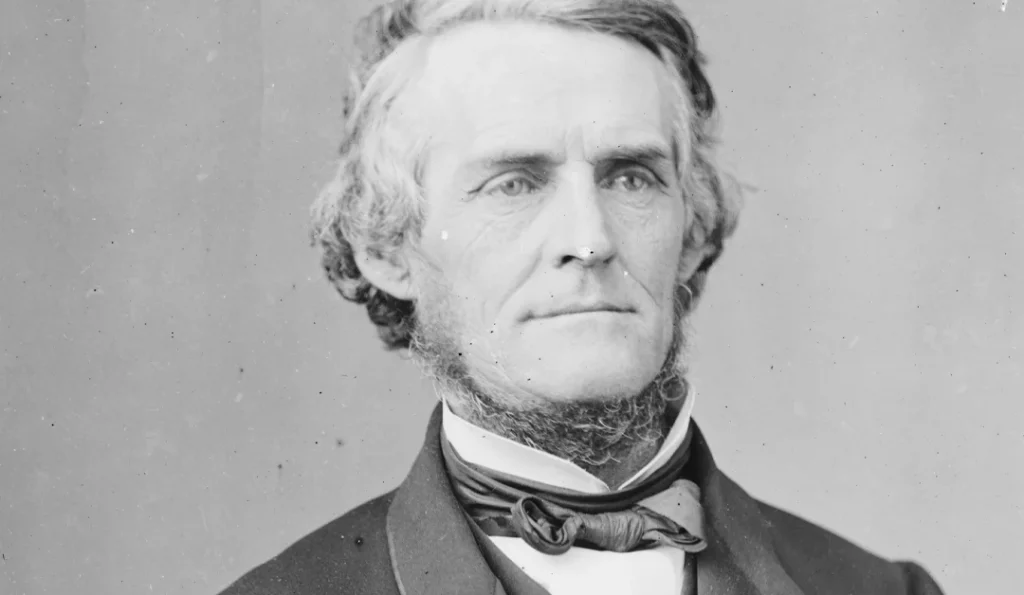November 23, 1815 – June 15, 1882
William Dennison, Jr., was the twenty-fourth Governor of Ohio, serving from January 9, 1860, through January 13, 1862. Dennison also served as Postmaster General of the United States from 1864 to 1866.
William Dennison, Jr., was born at Cincinnati, Ohio on November 23, 1815. He was the son of William and Mary (Carter) Dennison. As a youth, Dennison worked in the family woolen business. In 1835, he graduated from Miami University in Oxford, Ohio, at the age of nineteen years. Dennison then studied law in the Cincinnati office of George H. Pendleton
In 1840, Dennison was admitted to the Ohio bar and moved to Columbus, Ohio, where he established a law practice. That same year, he married Anne Eliza Neil, the daughter of local business magnate William Neil. While building his law practice, Dennison also became a wealthy banking and railroad entrepreneur, serving as president of the Exchange Bank in Columbus and as president of the Columbus and Xenia Railroad.
While living in Columbus, Dennison became active in politics. As a member of the Whig Party, Franklin and Delaware County voters elected him to the Ohio Senate in 1848. As a member of the senate, Dennison championed the repeal of Ohio’s “Black Laws,” which denied African Americans their civil rights. Dennison chose not to run for reelection at the end of his senatorial term; however he remained active in local political and civic activities. Dennison was a founding member of the Franklin County Agricultural Society and was selected as the organization’s first secretary on September 6, 1851. From 1853 to 1854, Dennison represented residents of the first ward as a member of the Columbus City Council.
In 1856, Dennison joined the fledgling Republican Party and served as an Ohio delegate to the organization’s first national convention in Pittsburgh, Pennsylvania. Three years later, Ohio Republican leaders nominated Dennison as their candidate for governor of Ohio. On November 1, 1859, Dennison defeated the Democratic Party candidate, Ohio Supreme Court Judge Rufus P. Ranney, by roughly thirteen thousand votes, to become Ohio’s twenty-fourth governor.
Dennison took office on January 9, 1860 and served until January 13, 1862, making him the first Ohio governor to serve during the American Civil War. During the first year of his term, Dennison refused the demands of Kentucky and Virginia state authorities to extradite fugitive slaves or to punish Ohioans who violated the Fugitive Slave Act of 1850. When the war began, Dennison seized control of Ohio’s railroads and telegraph lines to support Union war efforts. He also authorized the establishment of Camp Dennison near Cincinnati, a recruitment and training facility for Union volunteers, which was named in his honor. Under Dennison’s leadership, Ohio raised over 100,000 troops and organized twenty-three three-month regiments, and eighty-two three-year regiments for the Union army. In May 1861, without authorization from the federal war department, Dennison dispatched Ohio troops into western Virginia, where they guarded the First Wheeling Convention, which was considering the formation of the new state of West Virginia.
As the 1861 elections neared, Dennison appeared to have lost the confidence of many Ohio voters. Dennison’s heavy-handed war measures, coupled with his staunch support of the Lincoln administration’s war efforts, alienated Peace Democrats. Dennison’s support also waned among Republicans due to disarray in Ohio’s initial war mobilization. Fearful of losing the gubernatorial election to the Peace Democrats, Republican Party leaders joined with Democrats who supported the war and formed the Union Party. With the blessing of leading Republicans, the new party nominated Democrat David Tod, instead of the incumbent governor, as its candidate for governor in 1861.
Despite his failure to secure his party’s nomination for a second term as Ohio’s governor, Dennison remained active in Republican politics. In 1864, he chaired the Republican National Convention in Baltimore, which nominated incumbent President Abraham Lincoln. Lincoln rewarded Dennison by naming him Postmaster General of the United States on September 24, 1864. Dennison served in that post for nearly two years before resigning because he disagreed with President Andrew Johnson’s Reconstruction policies.
After resigning from the post office, Dennison focused on his numerous business interests in Columbus. He returned to public service in 1874, when President Ulysses S. Grant appointed him as the first President of the Board of Commissioners for the District of Columbia. Dennison served on the board until 1878. Two years later, Dennison unsuccessfully opposed James A. Garfield in an effort to secure the Ohio Republican Party’s endorsement for a U.S. senatorial position.
Shortly after Dennison’s failed senatorial bid, his health declined. On June 15, 1882, Dennison died at sixty-six years of age, at Columbus, Ohio, following a prolonged illness. He is buried at Greenlawn Cemetery, Columbus, Ohio.
